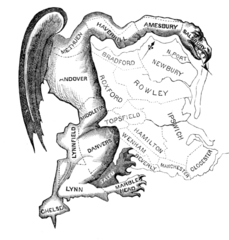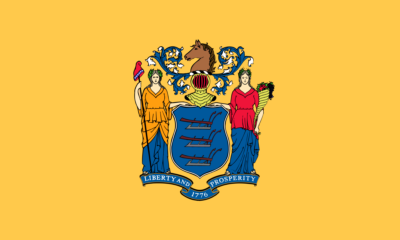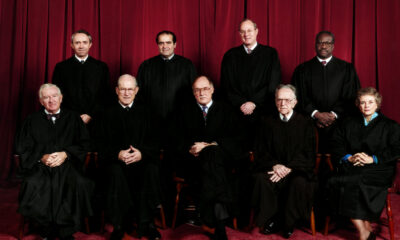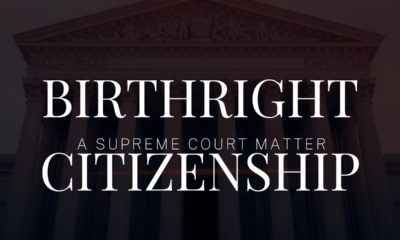Legislative
A new model for State legislatures

The Framers of the Constitution crafted an excellent model for selecting Members of Congress, and Presidents and Vice-Presidents. But they forgot to (or maybe couldn’t) extend that model to State legislatures. The wisdom of the Framers did not influence those who framed the State constitutions. Though most States copied the basic model for their legislatures and governors (and, where applicable, lieutenant governors), they did not copy the method for choosing members of the upper house, where applicable, or for choosing governors, or for drawing districts from which to elect members of their legislatures. Recent events have shown a great need to press all States to adopt the federal model – completely. To be sure, many of them will refuse. But patriots can influence them by moving to States who do adopt this model.
The original model for Congress and the Presidency
To understand how important the federal model is, one must examine it in detail. The House of Representatives consists of a number of members, elected for two-year terms, and apportioned among the States according to population. Originally the only limit on the size of the House was not more than one Representative for 30,000 people. (Exception: each State would have at least one Representative, no matter how few people lived there.)
The Senate, by contrast, consists of two members from each State. Originally, the legislatures chose them. Today, all the people elect Senators at large. That alone breaks the republican model, because the Senators originally were ambassadors of their State governments. To return to that system would be simple: strike Amendment XVII. That aside: each State has the same representation in the Senate. The Constitution even stops Congress (or an Article V convention) from amending that away.
Presidents of the United States have the Electoral College to choose them. The States choose the Electoral College anew every four years. Each State sends as many Electors as they send Senators and Representatives to Congress. (They must be different people.) Originally the Electors made their own judgments in electing Presidents. Today electors pledge to vote for a certain “ticket” and stand for election by the people. In a few States (like Maine), the people elect two Electors at-large, and then the voters in each congressional District elect one Elector each. But in most States the rule is: winner take all.
The present model for State legislatures and governors
In sharp contrast, the only difference between a State Senate and a State lower house is that the Senate has fewer members. Voters in districts choose members of both chambers, if a State legislature has two chambers. (Nebraska has only one.) Usually State legislatures draw their own districts, in addition to congressional districts. (Some States have redistricting commissions to do this duty.) These districts cross county boundaries willy-nilly, and sometimes take very odd forms. This applies equally to congressional and legislative districts, for either chamber.
Voters across any State elect the governor of that State. In addition, some (not all) States choose lieutenant governors. (Otherwise, the Senate chooses its own President who technically is “the lieutenant governor.”) Some States, like Virginia, let the voters elect attorneys general. Florida lets the voters elect all department heads.
The problem: governor of the cities
The problem: State governors are in effect governors of the cities, not governors of all the States. Occasionally the rural folk will “revolt” against their urban and suburban counterparts, at a time when those urbans and suburbans have split their vote. That is how Glenn Youngkin became Governor-elect of Virginia on 2 November. (That is, unless the Democrats manage to rob Youngkin of votes and “drop” sixty-nine thousand absentee ballots for Terry McAuliffe.) But most of the time, as in California, the urbans outnumber the rurals and vote in their own executive officers. The rural folk can do nothing, except leave for States in which urbans and exurbans and rurals happen to agree. Such is the apparent current case in Texas, Florida, the Dakotas, and other “Red States.”
Blame Alexander Hamilton
If you want to know where to lay the blame, lay it on the head of Alexander Hamilton. Besides being a “bankster,” he was an urban. He believed that urban dwellers would always be better educated and hence better qualified, either to govern or to choose representatives and governors. Therefore he, more than any other Framer, suggested that States not copy the federal model for governance. And when he did that, he compromised the fabric of our republic. For the winner-take-all principle, and the drawing of districts that do not respect boundaries, furthers democracy, not the republic. And democracy is inherently unstable and devolves to oligarchy. What’s the difference? Simply this. Democracy is two wolves and a lamb voting on what to have for dinner. The oligarchy consists of a dictatorial committee who tells everyone else what’s for dinner, like it or not.
But perhaps we can arrange things differently.
How to give the rurals their voice
Why not instead respect county boundaries and city and town limits when drawing districts either for Congress or the legislatures? And why not give rural governing units the same voice the U.S. Constitution gives less-populous States?
To do this, one must start with this simple rule, both at State and at federal level:
No district boundary shall ever cross a county boundary or the corporate limits of any city, town or village. Spectacles like drawing a district to include every black resident along an interstate motorway, and not any members of any other race, would end. Furthermore, any State Senator, State lower-house member, or U.S. Representative would represent all of a given polity or none. The only exception would be if the polity, like a major city, had too many residents for one Representative. Today if you live in New York City, your address tells you who your U.S. Representative is. And that Representative might also represent some neighboring—or distant—township. No more. A city might have more than one Representative, but Representatives would not also represent rural areas whose voters would effectively have no voice in their representation.
That rule would also apply to the members of State legislature. Today, a certain State Senator “represents” your editor, who lives in a sliver of Ashland falling within her district. But her real voter base lives in the City of Richmond. Under this proposed model, she would stay in Richmond and not presume to represent anyone in Ashland.
How to apportion members of legislatures
Members of the lower house would thus be apportioned among the various governmental units. (In Virginia, a unit is a county or an independent city.) Each unit would have at least one Representative, or Assemblyperson, or, as in Virginia, Delegate. And under no circumstances would any town within a county split its representation. A municipality too large for one Delegate would qualify as an independent city, anyway.
The Senate would consist of one Senator from each unit, regardless of population. And to return to the original idea of the republic, unit legislatures would choose Senators. This means the County Board of Supervisors, Commission, or whatever it calls itself, or the City Council. As a result the Senator for, say, Hanover County or the City of Richmond would be its ambassador.
This will certainly mean expanding the size of the Virginia General Assembly, both houses. Logically one might expect the need to expand other State legislatures as well. No matter. Do it. This will once again turn our States into the republics they ought to be. The republic is multi-level government, with each level answering to one level above and managing one level below. To protect that idea, respect political boundaries. Counties, cities, towns, and villages are republics, too.
How to elect governors (and lieutenant governors, attorneys general, etc.)
We next turn to how to elect State governors. To do this, paraphrase the U.S. Constitution on this point, as thus:
Each unit shall appoint, in such manner as the legislative body thereof may direct, a number of Electors equal to the number of Senators and Delegates [or Assembly Members or Representatives] the said unit sends to the Legislature [regardless of its name]. But no sitting Senator, Delegate [or Assembly Member or Representative], or other civil officer may be appointed an Elector.
The Electors shall meet in their respective units and vote for one person each for Governor and Lieutenant Governor, at least one of which shall be from a different unit than themselves…
The rest goes into detail that might differ among the States. Ideally the model would be that the City Council or County Board of Supervisors would choose one Elector. Or else the people of the entire unit would elect that Elector. Thereafter, the voters in each lower house district would elect a Gubernatorial Elector from that district.
States that elected attorneys general (or even Secretaries of State and/or other department heads) separately and apart from governors could choose different electoral colleges for each office. Different units would send electoral college delegations in the same way as for governors. Ideally, the voters in the entire State would elect two Presidential Electors at-large and one from each Congressional district. This, of course, is the law in Maine.
Why bother?
One can readily see the wisdom of this model by looking at a county-by-county map of any recent Presidential election. The county-by-county map of Virginia for the 2021 governor’s race also illustrates the wisdom. With blue for Democrats and red for Republicans, one sees a sea of red with blue islands. Those blue islands represent America’s large cities and most densely settled States. The current President of the United States is not the President of all the people. He is the President of the city dwellers. Even laying aside Mike Lindell’s allegation that the Democrats (with help from the PRC) stole the election, this is an inherently unjust state of affairs. It only contributes to urban-rural tensions.
Similarly, all too often, State governors are governors of the city dwellers. This case obtained in Virginia until Terry McAuliffe foolishly split the city vote with his brash declaration that parents had no say, and by right ought have no say, in the education of their own children. Rural parents would laugh at such an absurdity. Enough urban parents reacted in outrage, then vented their outrage at the polls. With the result you know.
Worse still, the disrespect for local boundaries in the drawing of Congressional and legislative districts has broken neighborly relations and distorted what ought to be an effort to persuade members of a true historical community to choose someone who represents them, not some cloudy idea of “meta-community.” We had enough of such “virtual representation” in colonial days.
Conclusion
Therefore, one can best serve the ideal of the republic, with its respect for local community and the rule of law, by adopting this model for choosing State legislatures, State executive officers, and Members of the House of Representatives. This would also reduce or eliminate the abuse that Governor Elbridge Gerry of Massachusetts popularized. Even he did not draw a district that crossed township boundaries. Modern “gerrymanderers” do it all the time. This must stop. And another thing that must stop is the spectacle of electing executives who are governors (or Presidents) of the cities only.
About the image
This, of course, is Elkanah Tisdale’s original Gerrymander cartoon.
Terry A. Hurlbut has been a student of politics, philosophy, and science for more than 35 years. He is a graduate of Yale College and has served as a physician-level laboratory administrator in a 250-bed community hospital. He also is a serious student of the Bible, is conversant in its two primary original languages, and has followed the creation-science movement closely since 1993.
-

 Civilization2 days ago
Civilization2 days agoDC Pipe Bomb Arrest Raises Questions About Christopher’s Wray’s FBI
-

 Civilization5 days ago
Civilization5 days agoYoo Hoo, VP Vance—Your Character is Showing!
-

 Executive5 days ago
Executive5 days agoThe Last Supper: New York’s Socialist Feast
-

 Guest Columns4 days ago
Guest Columns4 days agoCongressional Leaders See Far Higher Stock Returns Than Peers
-

 Civilization3 days ago
Civilization3 days agoThe Legal Logic Behind U.S. Operations Against Narco-Terrorist Networks
-

 Civilization5 days ago
Civilization5 days agoFacing Facts & Rolling Back Mythologies: The New National Security Strategy
-

 Civilization4 days ago
Civilization4 days agoHow Trump Changed America
-

 Executive3 days ago
Executive3 days agoNewsom’s ‘National Model’ for Homeless Wracked by Fraud













[…] proposal recalls CNAV’s earler “model for State legislatures,” calling […]
[…] in the latter half of the twentieth century. Nor do they propose any workable alternative. CNAV has made such a proposal. Among other things it provides that boundaries for Congressional or legislative districts should […]